
Object: M7 open cluster in Scorpius
Date: 2011/08/01
Observer: Viktor Cseh
Delightful open cluster, in Milky Way’s.
Clear Sky!
Viktor 🙂
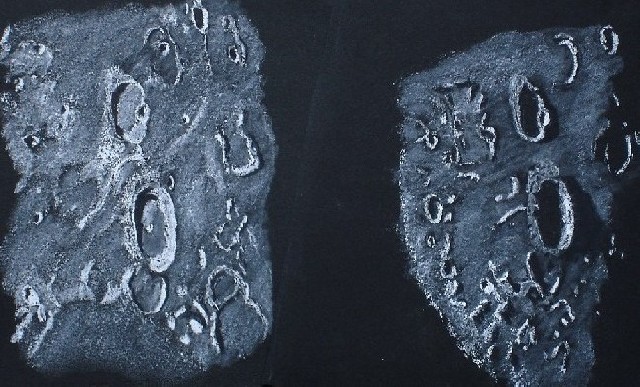
With the Moon at waning gibbous phase, it continues to dominate the night sky for a few more days. On Tuesday night I carefully picked a target area for sketching so that I might catch it again the next night to see the change in shadows a day makes. Lucky for me the sky was clear both nights.
Crater Franklin (58 km.) is the larger and older of the pair and Cepheus (41 km.) has a visible impact crater namely, Cepheus A (13 km.) directly on its northeastern rim.
Sketching Information
First Sketch
Franklin and Cepheus craters on ebony black Canson paper using white and black Conte’ pastel pencils
Sketch Date: August 16, 2011, using a 10 inch f/5.7 Dobsonian telescope riding on an equatorial platform with a 6mm eyepiece for 241x at 05:00-06:10 UT
Seeing: Antoniadi III
Weather: Clear, calm, 59 degrees F (15 degrees C)
Lunation: 16.5 days
Moon 94.3% illuminated
Colongitude: 115.7°
Second Sketch
Same type of paper
Sketch Date: August 17, 2011, using same telescope and same eyepiece at 04:00-05:15 UT
Seeing: Antoniadi III
Weather clear, calm, 64 degrees F (17 degrees C)
Lunation 17.4 days
Moon 89.3% illuminated
Colongitude 127.3°
Frank McCabe
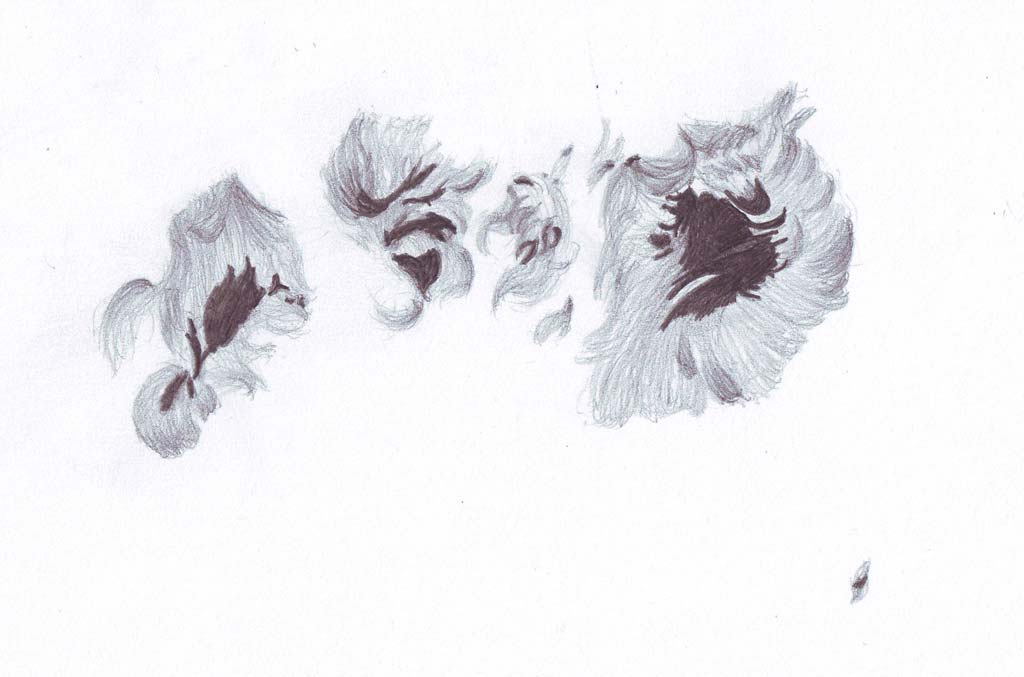
Object name: Sunspots / Sun
Object Type: Sun
Location: Budapest, Hungary, Polaris observatory
Date: 24th September 2011. UT: 12:30-13:20
Media: Graphite pencil used on white paper
Equipment used: 200/2470 refractor, Fornax 51 (7 mm Planetary) – 352x
Dear Asod,
I would like to share my sketch about the sunspots in the group 11302. I have made this sketch with a 200/2470 refractor in Polaris Observatory Budapest. This is my first sketch with this fine details at such enlargement of the object.
Unfortunately the seeing was not the best, but still I always had 1-2 seconds when everything was clear so I could sketch what I see. It was exciting to see what fine details are visible within the umbra and not only in the penumbra.
—
dr. Hannák Judit
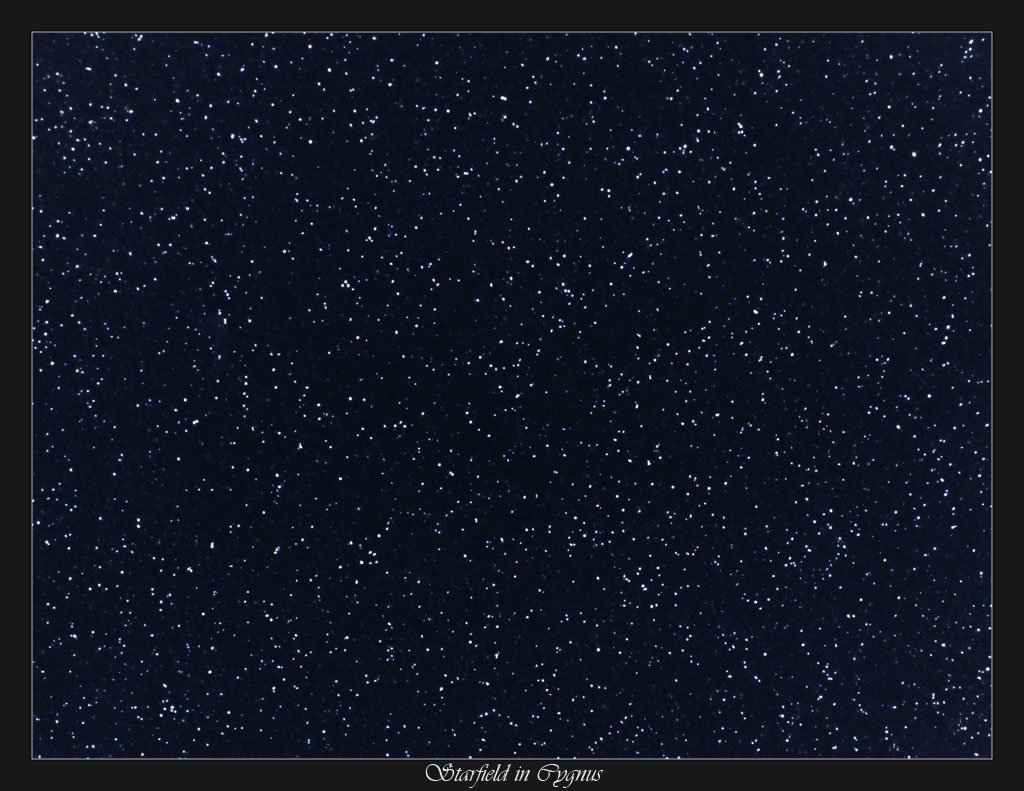

– Object Name: Milky Way
– Object Type: Starfield
– Location: Lith, the Netherlands
– Date: 25-7-2011
– Media: pencil sketch on white paper
The bright band of the Milky Way is beautiful visible in this time of the year. When you look high up in the sky, you’ll see the constellation of Cygnus. This constellation lies from our perspective in the Milky Way band.
So, when you aim your binocular or telescope to this region, you’ll see a countless amount of stars. Each star in this vast starfield is unique. Every single star tells his own story. They have planets that orbit around them, and on those planets may be live. Dreaming about the wonders that are out there is what makes astronomy so special.
Thanks for watching,
Rutger Teule
www.rutgerteule.com

This morning everything seemed to be right. The weather was absolutely great, the Sun was more active than I’ve seen so far this year and the seeing was above average. A good day to try sketching a full-disk h-alpha sun for the first time instead of an isolated prominence. First I made a blank disk with a soft white pastel. I took the sketch outside and filled in all the details I could see through the eyepiece of my 70mm solar telescope with white and black pastel pencils. All regions were very active, especially the middle one: it changed its shape within minutes. Sometimes little bright flare-like brightenings appeared and disappeared 2 minutes later. A wonderful sight! It took me one hour (from 08.00 UT – 09.00 UT) to complete the drawing. I scanned the (black&white) sketch and gave it a reddish color with Photoshop.
Object Name Sun
Object Type Star
Location Deventer, The Netherlands
Date August 2, 2011
Media Pastel on black paper
Kind regards,
Roel Weijenberg
www.roelblog.nl
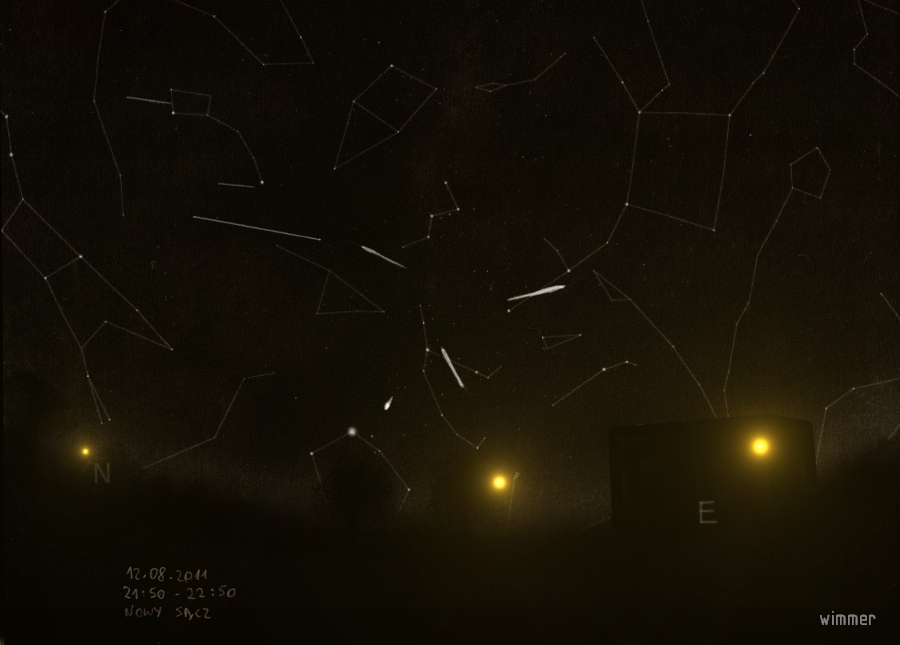
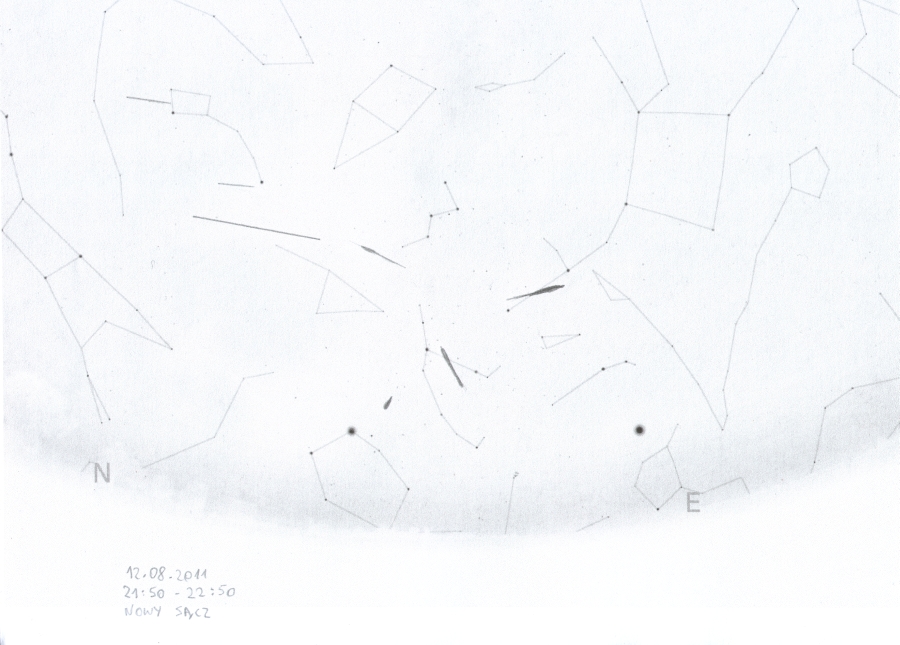
Hi!
I tried to note Perseids during the maximum.
Me and my fiancee – Anna – went into the any dark place in the Nowy Sącz city. Our place was not too good, but we did not have much choise. We had a some problem with two bright lights. And a big problem with big, bright moon 🙂
In an one hour we have succeeded to cath seven bright metors.
First sketch is a template made with Stellarium. Tamplate was printed. On this template we sketched the meteors.
The second version is similiar to the look from our observing place.
Object: Perseids during the maximum.
Date: August 12, 2011.
Time: From 9:50 PM to 10:50 PM
Place: Nowy Sącz
Equipment: None. Naked eye.
Media: Graphite pencil, tooling with GIMP2
Author: Aleksaner Cieśla (Wimmer)
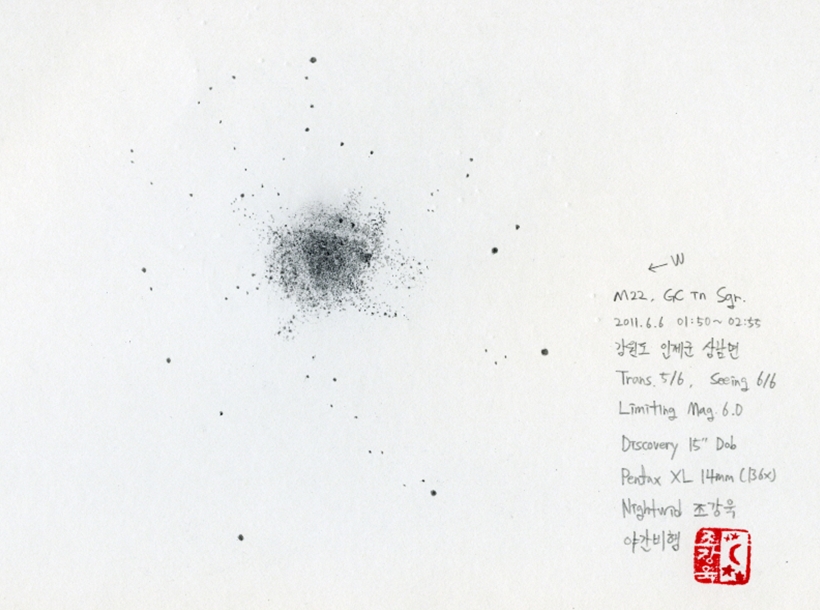
Object Name : M22 (GC in Sgr)
Object Type : Globular Cluster
Location : Kangwon-do, South Korea
Date : 06.06.2011
Media : White paper, 0.7mm Sharp Pencil
Hi all. I sketched M22 under dark sky. (Limiting Mag. 6.0)
I saw some ‘dark lane’ in this cluster..
It is real? or illusion? I’m not sure
Dark lane Description
http://www.nightflight.or.kr/bbs/data/tmp3/M22_des_110606.jpg
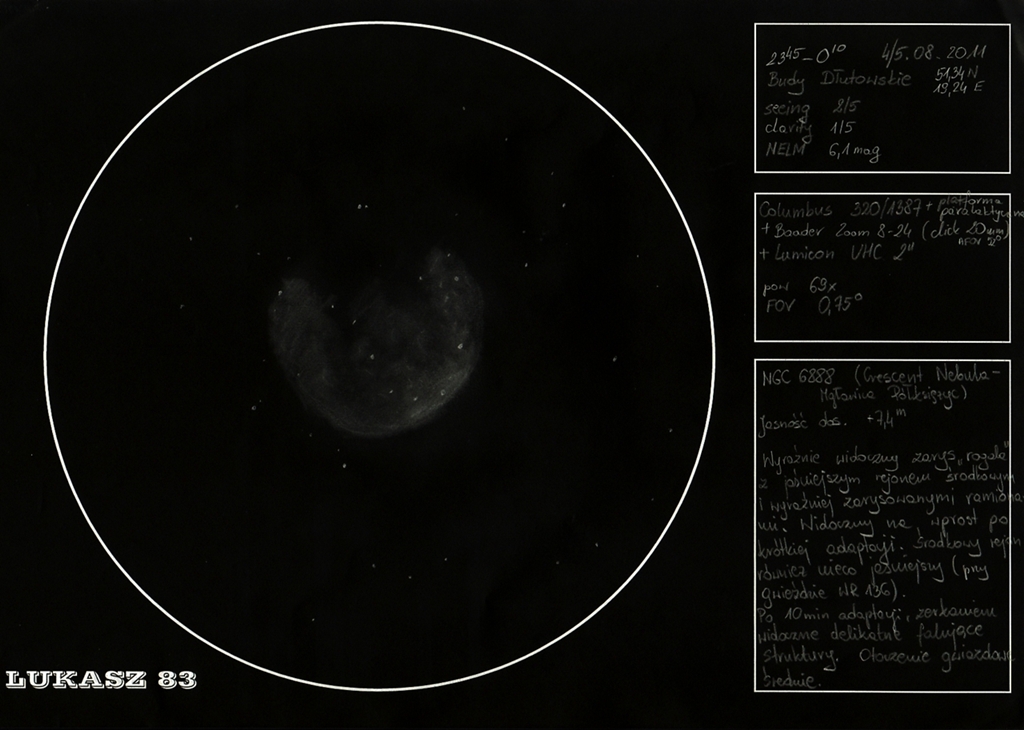
Object Name: NGC 6888 (Crescent Nebula)
Object Type: emission nebula
Location: Budy Dłutowskie – small village in central Poland
Date: 05.08.2011
Media: graphite pencil, white paper, color invert
Telescope: Columbus 13” (320/1387 Newtonian telescope) + Baader Zoom Mark III (set on 20mm) + Lumicon UHC
Seeing: 2/5
Transparency: 1/5
NELM: 6,1 mag
Hello
It was really good night. Clarity was very good so even faint objects were visible. NGC 6888 – emission nebula in Cygnus (in internet, you can find many pictures of this object and much less observation reports and sketches). Formed by stellar wind from central Wolf-Rayet star (WR136). On sketch you can see shape of crescent and after few minutes of eye adaptation, also faint structures inside nebula were visible.
Clear Sky
Łukasz
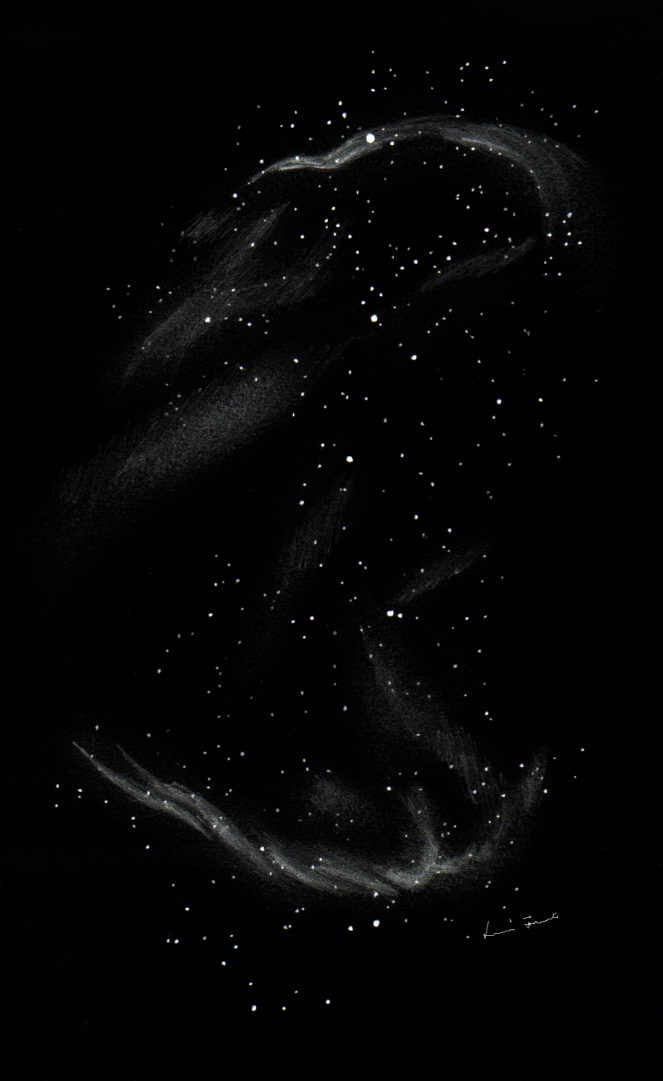
Dear ASOD, hereby sending my sketch of the Veil nebula.
I wanted to sketch the whole Veil ever since I first saw this breathtaking nebula, but it’s so huge that I was never brave enough to give it a start. Some weeks ago I decided to give it a try, and here’s the result.
It took about 2 hours to finish, with all stars and nebulous areas drawn at the eyepiece in one session. As I’m observing from a very steep valley, my horizon is very high, so it was a real race with the time – perhaps that’s why a lot of stars are missing from the “less important” regions.
The sketch covers an area of about 4 times 1.5 FoV’s, done with a 12″ dobsonian, Baader Hyperion 21mm EP (71x), and a cheap O-III filter. Used an A/4 sketchbook, B and 5B pencils. Inverted on computer. Date/time: 08.27.2011 01:00-03:00 UT. Location: Nádasdladány, Hungary. SQM: 21.16m/arcsec^2.
Clear skies, Ferenc